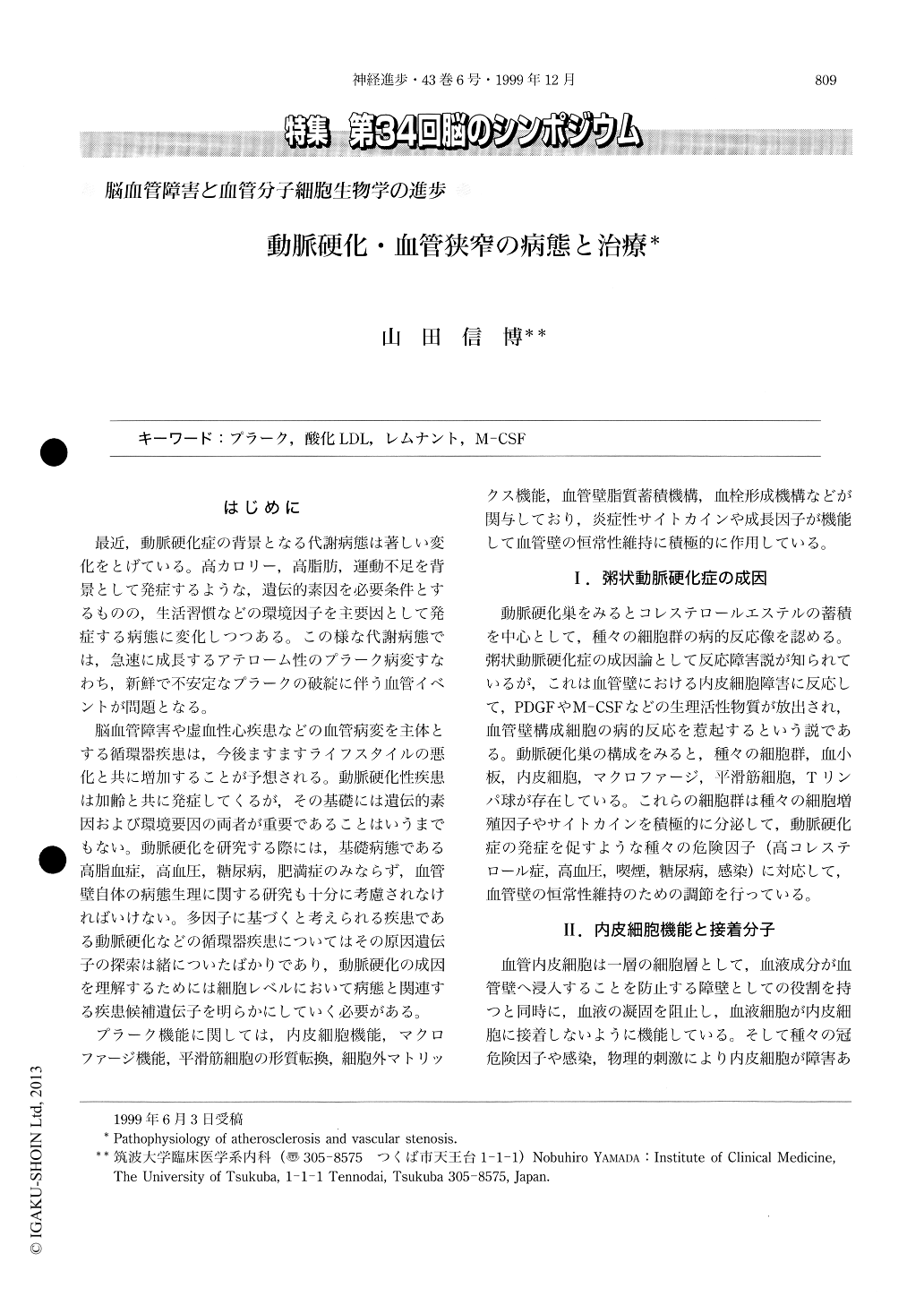Japanese
English
- 有料閲覧
- Abstract 文献概要
- 1ページ目 Look Inside
はじめに
最近,動脈硬化症の背景となる代謝病態は著しい変化をとげている。高カロリー,高脂肪,運動不足を背景として発症するような,遺伝的素因を必要条件とするものの,生活習慣などの環境因子を主要因として発症する病態に変化しつつある。この様な代謝病態では,急速に成長するアテローム性のプラーク病変すなわち,新鮮で不安定なプラークの破綻に伴う血管イベントが問題となる。
脳血管障害や虚血性心疾患などの血管病変を主体とする循環器疾患は,今後ますますライフスタイルの悪化と共に増加することが予想される。動脈硬化性疾患は加齢と共に発症してくるが,その基礎には遺伝的素因および環境要因の両者が重要であることはいうまでもない。動脈硬化を研究する際には,基礎病態である高脂血症,高血圧,糖尿病,肥満症のみならず,血管壁自体の病態生理に関する研究も十分に考慮されなければいけない。多因子に基づくと考えられる疾患である動脈硬化などの循環器疾患についてはその原因遺伝子の探索は緒についたばかりであり,動脈硬化の成因を理解するためには細胞レベルにおいて病態と関連する疾患候補遺伝子を明らかにしていく必要がある。
Atherosclerotic lesions can be characterized as accumulations of cholesterol esters and pathologic reactions by various cell groups. The pathogenesis of atherosclerosis has been discussed primarily on the basis of these two phenomena. A well-known concept to explain the etiology of atherosclerosis is the theory of response to injury. According to this theory, physiologically active substances such as platelet-derived growth factor (PDGF) and macrophage colony-stimulating factor(M-CSF) are released in response to injury of the vascular wall, and these substances induce pathologic reactions by the cells constituting the vascular wall.

Copyright © 1999, Igaku-Shoin Ltd. All rights reserved.


